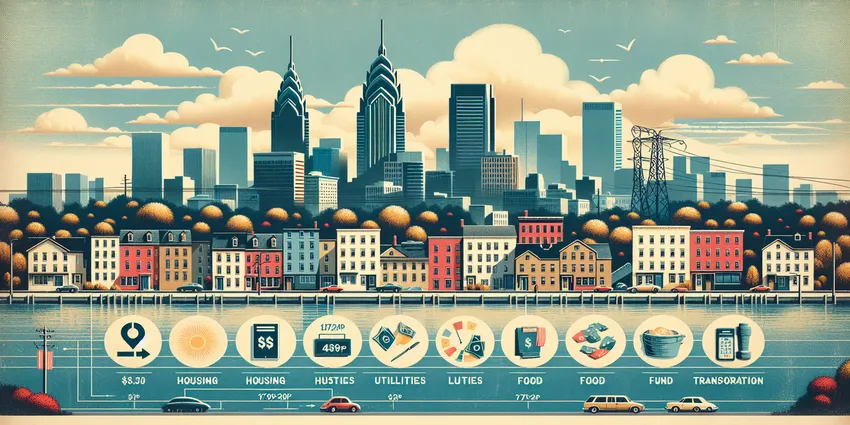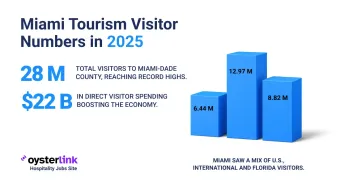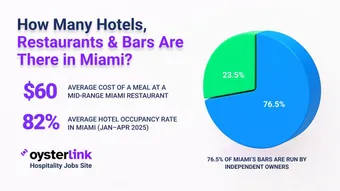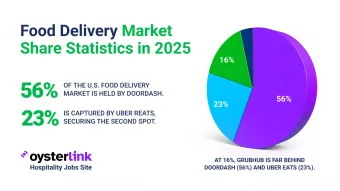Pennsylvania Cost of Living: Quick Takeaways
- Housing Costs: The average rent for a one-bedroom apartment in Pennsylvania is projected to reach $1,525 in 2025.
- Transportation Expenses: Public transit monthly passes average $100 with fuel prices around $3.64 per gallon.
- Healthcare Costs: Employer-sponsored health insurance averages $532 monthly with Silver plans at about $621.
- Income Levels: Median household income is expected to be $67,587 in 2025.
Pennsylvania offers a diverse cost of living landscape across its urban and rural areas.
This article presents detailed insights into housing, transportation, utilities, and more for 2025.
Explore the breakdown of expenses to understand what it really costs to live in Pennsylvania today.
1. Housing Costs in Pennsylvania
Housing costs, especially rent, have been steadily rising in Pennsylvania over the past years.
- 2010: Average rent for a 1-bedroom was approximately $800
- 2015: Increased to $900
- 2020: Reached around $1,000
- 2024: Climbed to $1,200
- 2025: Projected to reach $1,525
These figures highlight a notable growth in rental prices across the state, reflecting increased demand and inflationary pressures.
For those managing hospitality business properties or looking into accommodation expenses, our hospitality real estate market trends spotlight offers valuable insights.
2. Homeownership and Real Estate Trends in Pennsylvania
The real estate market in Pennsylvania has witnessed steady appreciation over recent years.
- 2010: Median home price was about $180,200
- 2015: Rose to $200,000
- 2020: Increased to $220,000
- 2024: Reached $257,268
- 2025: Expected to hit $281,820
This upward trend underlines growing home values that both benefit sellers and challenge buyers in the market.
3. Transportation Expenses in Pennsylvania
Pennsylvania residents incur various transportation costs based on usage of public transit, fuel, and vehicle maintenance.
- Public Transit: One-way fares average $2.50, with monthly passes costing around $100
- Fuel Prices: Average cost per gallon is $3.64 as of 2025
- Vehicle Maintenance: Annual maintenance expenses are roughly $1,200
Transportation costs can vary depending on individual commuting habits and location.
4. Utility Costs
Monthly utility costs for an average household in Pennsylvania include:
- Electricity: $111.81
- Internet: $60
- Total Utilities: $171.81
Utility expenses are important factors in household budgeting and vary with usage and provider rates.
5. Grocery and Food Expenses
Grocery costs in Pennsylvania tend to align with the national average but reflect some regional variation.
Monthly grocery expenses per person are approximately $401.02. Dining out costs typically range from $15 at casual places to around $50 for mid-range restaurants.
Restaurant owners looking to improve profitability might find our how to increase restaurant revenue article especially useful.
6. Healthcare Costs
Healthcare expenses include insurance premiums and out-of-pocket spending.
Monthly employer-sponsored health insurance averages about $532, while Silver health plans cost roughly $621 monthly.
7. Educational Expenses
Pennsylvania provides various educational options with differing costs:
- Public Schools: Generally tuition-free as funded by taxes
- Private Schools: Average annual tuition is near $10,000
- In-State Universities: Average tuition around $14,000 per year
Education costs vary widely based on chosen institutions and programs.
8. Entertainment and Leisure
Entertainment options include cinema, gyms, and dining:
- Movie Tickets: Average price is $12
- Gym Memberships: About $30.20 monthly
- Mid-Range Restaurant Meals: Typically cost around $50
Annual entertainment spending averages around $2,000, supplemented by personal care services costing about $600 yearly.
9. Taxes and Miscellaneous Fees
Pennsylvania's tax rates are as follows:
- State Income Tax: Flat rate roughly 3.07%
- Sales Tax: General rate is approximately 6%
- Property Tax: Averages about 1.58%
These taxes affect residents' overall cost of living and financial planning.
10. Childcare and Family Expenses
Family-related expenses include childcare and activities for children:
- Daycare: Costs average $1,000 per month
- After-School Programs: Typically $300 monthly
- Extracurricular Activities: Around $100 monthly
Such expenses are key considerations for families budgeting household costs.
11. Clothing and Personal Care
Monthly spending on personal essentials includes roughly $100 for clothing and $50 for personal care products and services.
These costs reflect typical consumer behavior in Pennsylvania.
Hospitality managers may also be interested in our employee cell phone policy template to manage personal care benefits and workplace policies.
12. Insurance Costs
Insurance policies influencing living costs include:
- Health Insurance: Average monthly premium about $532
- Auto Insurance: Annual premium near $1,200
- Homeowners Insurance: Annual cost about $1,000
- Renters Insurance: Typically around $200 annually
Managing these insurance costs is important for financial security.
13. Miscellaneous Expenses
Additional annual expenses include:
- Entertainment: Around $2,000
- Personal Care Services: About $600
- Miscellaneous Goods and Services: $500
These spending categories contribute to overall quality of life and comfort.
14. Income and Salaries
Median household income has grown steadily in Pennsylvania:
- 2010: Approximately $50,000
- 2015: $55,000
- 2020: $60,000
- 2023: $63,463
- 2025: Projected to be $67,587
This wage growth supports increasing living expenses across the state.
Hospitality employers might also explore trends in wages to better plan salaries and retention with our hospitality wages in 2025 spotlight.
15. Comparison with National Averages
In 2025, Pennsylvania's cost of living compares as follows to national averages:
- Overall Cost: Approximately 2% higher
- Housing: About 6% lower than national average
- Utilities: 6% higher
- Food: 2% higher
- Healthcare: 3% higher
- Transportation: 7% higher
- Goods and Services: 4% higher
This data highlights relative affordability in housing contrasted by higher utility and transportation costs.
Our Methodology for Pennsylvania Cost of Living Figures
The information presented here is compiled from trusted data sources including government statistics, real estate databases, surveys, and consumer reports. When exact figures were not available, reasonable estimates were used to provide a comprehensive overview of Pennsylvania's cost of living.
To better understand hiring costs and budget planning in hospitality, see our hiring costs for restaurants spotlight.
Pennsylvania Cost of Living: Conclusion
Living in Pennsylvania in 2025 involves a blend of moderate housing costs, rising transportation expenses, and healthcare prices slightly above national averages.
Despite utilities and transportation being somewhat more expensive, relatively affordable housing and steady income growth help balance overall living expenses.
Understanding these factors enables residents and newcomers alike to make informed financial decisions when considering Pennsylvania as a place to live.
If you are considering a career in hospitality in Pennsylvania, explore our detailed restaurant manager career guide to learn how salaries and living costs might affect your job prospects.




